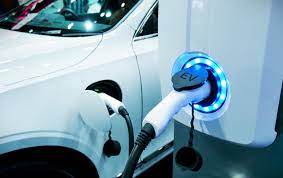Electric vehicles innovation
Electric vehicles (EVs) are an undeniably appealing low carbon transport choice, because of their natural advantages, lower running expenses and always further developing scope of models.
Toward the finish of 2020, there were 10 million electric vehicles on the world’s streets, with this figure anticipated to increment to an amazing 145 million of every 2030.
Notwithstanding, a discount change to electric vehicles will require critical development of EV charging framework, as well as mechanical advancements. We’ve picked our best five electric vehicle developments to watch out for over the course of the following couple of years.
Vehicle to matrix
Brilliant charging choices for electric vehicles are turning out to be progressively famous, permitting drivers to control the time and pace of charge in light of energy interest, which assists with adjusting the matrix.
Be that as it may, the subsequent stage is vehicle to lattice (V2G) charging, which permits energy put away in the vehicle’s battery to be traded to the network during times of appeal. EV drivers are transformed into ‘prosumers’ – the two customers and suppliers of power – and are compensated for their adaptability, which additionally helps the network.
Octopus Energy’s Powerloop project, in which Energy Saving Trust is an accomplice, is a genuine illustration of how V2G functions. You can figure out more about the undertaking here.
Remote charging
Remote charging for vehicles works along these lines to remote telephone chargers, utilizing inductive charging innovation. Power is moved from one attractive curl in the charger, which is concealed underneath the street surface, to a second attractive loop or cushion fitted to the underside of the vehicle.
Charging electric vehicles, taxicabs and transports remotely has made one stride nearer to the real world, after a preliminary of remote charging innovation for taxis was declared in Nottingham in 2020. The Remote Charging Electric Cabs (WiCET) venture will see five remote charging cushions introduced at a taxi rank in the city and nine electric cabs fitted with remote charging cushions.
The £3.4 million plan, which is being financed by the Division for Transport, could be extended all the more broadly for public use if effective. One of the principal advantages of remote charging is that it permits different vehicles to re-energize immediately. It could likewise accelerate charging and has potential as an on-road charging answer for individuals without carports.
Credit: Transport Nottingham/WiCET
Super quick charging
While all that’s needed is a couple of moments to top off a petroleum or diesel vehicle with fuel, EV drivers normally need to stand by significantly longer to re-energize their batteries to full. In any case, super quick charging choices are beginning to show up, ending up a genuine advantage for longer excursions as they lessen charging times to the time it takes to have a normal driving break.
The Kia Ev6 and Hyundai IONIQ 5 electric vehicles, for instance, can add 60 miles of reach with only five minutes of charging, utilizing a 250kW charger. What’s more, we’re presently beginning to see the advancement of considerably quicker chargers. As of June 2022, there are 17 350kW electric charging stations in activity across the UK and a further two areas under development, because of the Ionity joint endeavor.
Spring up and light post chargers
One of the disadvantages of growing electric vehicle charging framework is that the chargers can mess roads and asphalts. In any case, two comparative developments could diminish this messiness: spring up asphalt chargers and light post chargers.
London-based EV charging organization Metropolitan Electric Organizations has fostered an on-road charging gadget, the UEone, which withdraws into the ground when it’s not being utilized. It tends to be enacted remotely utilizing a cell phone application. The organization tested six spring up quick chargers in Oxford in 2019-20, which demonstrated a major achievement.
Another English organization, Char.gy, has gotten subsidizing from the UK Government to introduce module focuses in light posts across London. As per Char.gy, a standard light post utilizing Drove bulbs will have around 24 amps of overabundance power supply, which can be utilized to charge vehicles, giving around 20 miles of driving for each hour of charging.
Likewise, the Gul-e project in Oxford, saw charge points introduced in houses with no off-road stopping with a ravine put in the asphalt from the house to the kerb. A long charging link associated the vehicle to the charge point, permitting inhabitants to energize utilizing their own (less expensive) power and eliminating both charge point mess and outing risks from links lying across asphalts.
Zapped streets
Zapped streets utilize above electrical cables to control bigger electric vehicles, like trucks, but these are not reasonable for traveler vehicles. In July, the Office for Transport granted subsidizing to a task drove by Costain to investigate how long-range trucks can be zapped utilizing above power links on motorways across the UK.

